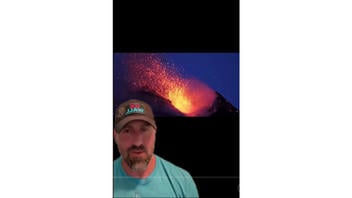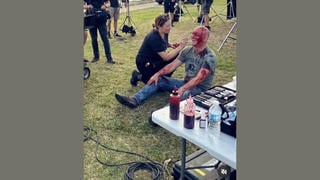
Are volcanos petrified dragon remnants that "sometimes bubble up," as a post on social media claims? No, that's not true: Volcanos are openings in the earth's surface through which molten rock, gases and ash escape. Dragons -- defined as giant, flying, fire-beathing creatures -- do not exist in real life. The account that created this post says it's satire and for entertainment only.
The claim appeared in a video on TikTok (archived here) on June 24, 2024. The video opened with a man asking:
Do you still believe that volcanos erupt because liquid hot magma is bubbling up from the earth's core? Well, if you do, you should stick around. And if you like dragons, you should stick around, too.
This is what the post looked like on TikTok at the time of writing:
(Source: TikTok screenshot taken on Fri Jun 28 14:56:24 2024 UTC)
The man in the video showed pictures of volcanos that, arguably, could look like dragons. At the 3:25-minute mark, he said:
Volcanos -- they use these as scare tactics, just like they do a whole lot of other things, like global warming, nuclear bombs and all sorts of things. I actually think it's a lot more likely that pre-flood animals got petrified and their insides remain active and sometimes bubble up.
That's not true.
Volcanos are not petrified dragons because dragons are not real. Giant, flying, fire-breathing creatures of lore don't exist -- so the idea that their petrified remnants remain active is impossible.
Rather, according to the U.S. Geological Survey (archived here), volcanos are openings where molten rock, gases and ash erupt from the earth's interior onto its surface. There are many different types of volcanos, as can be seen here (archived here).
The man behind the post on TikTok includes a disclaimer on his account that says it's for satire and entertainment purposes only. But users on social media repost his videos without the prominent disclaimer, as can be seen here (archived here).
Lead Stories previously debunked a claim that a photo shows the "mud fossil remains" of dragon head.


















